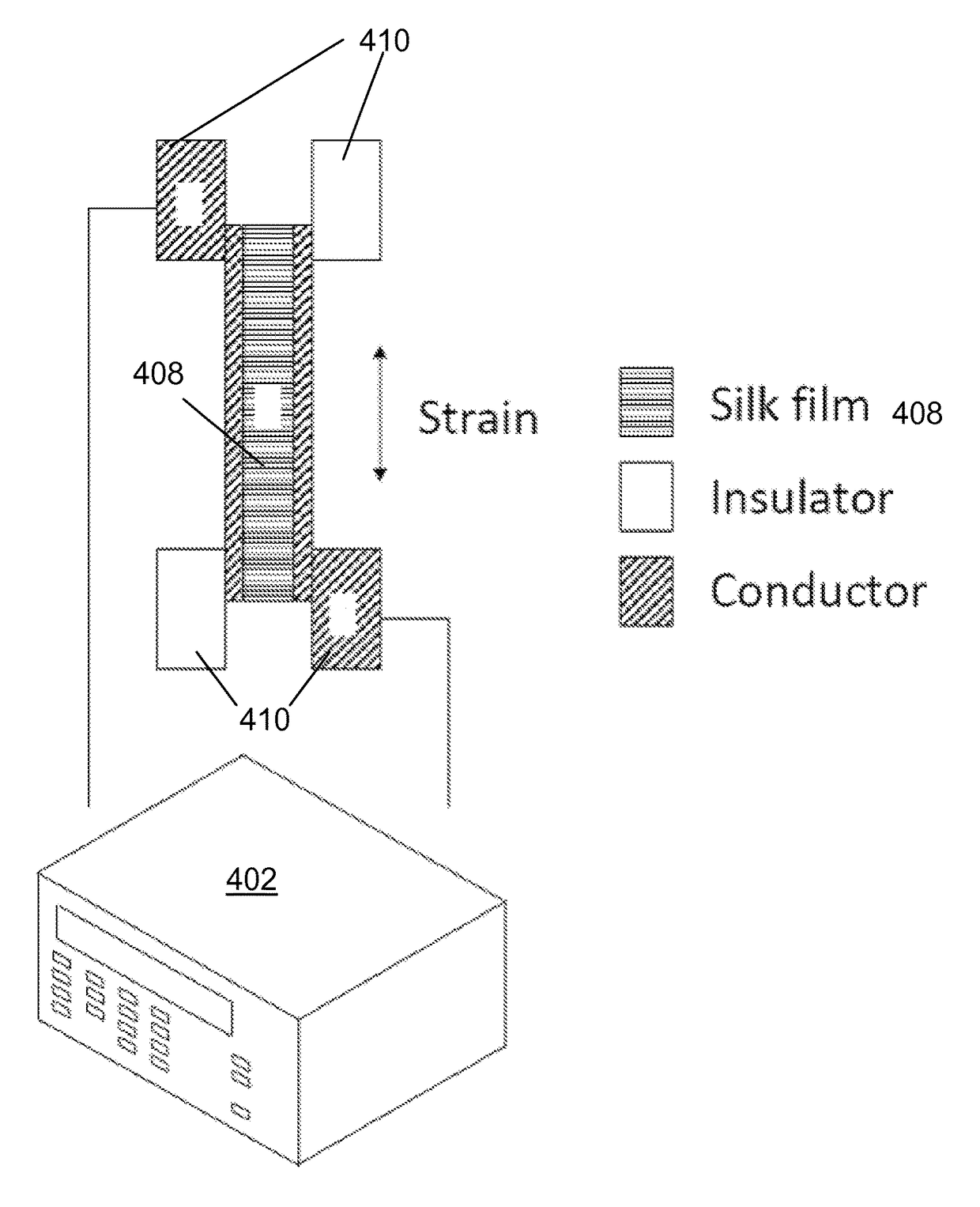Silk-based piezoelectric materials
a piezoelectric material and piezoelectric technology, applied in the field of silk-based piezoelectric materials, can solve the problems of not being able to achieve the desired level of silk piezoelectricity for various applications, not having any insight into the mechanisms and structural changes, and not being able to provide further studies to achieve the effect of controlling silk piezoelectricity at a desired level for various applications, and achieving stable and robust oscillations
- Summary
- Abstract
- Description
- Claims
- Application Information
AI Technical Summary
Benefits of technology
Problems solved by technology
Method used
Image
Examples
example 1
and Methods
1A. Preparation of Aqueous Silk Fibroin Solutions and Silk Films
[0132]Silk fibroin aqueous solutions were prepared as previously described. See Nazarov et al., 2004. Briefly, Bombyx mori cocoons were cleaned and cut into small pieces. In a subsequent degumming process, sericin, a water-soluble glycoprotein bound to raw silk fibroin filaments, was removed from the silk strands by boiling Bombyx mori cocoons in an aqueous solution of 0.02 M sodium carbonate for 30 minutes to 60 minutes. Thereafter, the remaining silk fibroin bundle was rinsed thoroughly in deionized (DI) water (ρ=18.2 MΩ) to extract the glue-like sericin proteins and allowed to dry overnight. The dried silk fibroin was dissolved in an aqueous solution containing 9.3 M LiBr at room temperature or heated at 60° C. for 4 hours. The silk fibroin solution was dialyzed against DI water using Slide-A-Lyzer® 3.5K MWCO dialysis cassettes (Fisher Scientific, Pittsburgh, Pa.) for 2 days to remove the residual salt. Th...
example 2
nd Discussion
2A. Film Processing
[0144]Dynamic mechanical analysis was employed to establish a suitable temperature for zone-drawing silk fibroin films. FIG. 1A shows typical results of temperature sweeps of the complex dynamic tensile modulus, E*=E*+iE″ (where E is the storage modulus and E″ is the loss modulus) and the loss tangent, tan (δ)=E″ / E′ for silk fibroin films. At a heating rate of 5° C. / min, for temperature ranging from room temperature up to approximately 170° C., E* was essentially constant upon the temperature change and was frequency independent (see, e.g., FIG. 8A); for T>170° C., there was a sharp decrease in E* values that indicated an onset of a “glass transition”. At this heating rate, tan (δ) peaked at 190° C., suggesting a “glass transition temperature” or TG (FIG. 1A). Typically, silk films can be stiff for zone drawing at temperatures lower than TG; whereas drawing silk films at temperatures much higher than TG may render the film brittle and easy to fracture...
PUM
| Property | Measurement | Unit |
|---|---|---|
| frequency | aaaaa | aaaaa |
| frequencies | aaaaa | aaaaa |
| frequencies | aaaaa | aaaaa |
Abstract
Description
Claims
Application Information
 Login to View More
Login to View More - R&D
- Intellectual Property
- Life Sciences
- Materials
- Tech Scout
- Unparalleled Data Quality
- Higher Quality Content
- 60% Fewer Hallucinations
Browse by: Latest US Patents, China's latest patents, Technical Efficacy Thesaurus, Application Domain, Technology Topic, Popular Technical Reports.
© 2025 PatSnap. All rights reserved.Legal|Privacy policy|Modern Slavery Act Transparency Statement|Sitemap|About US| Contact US: help@patsnap.com



